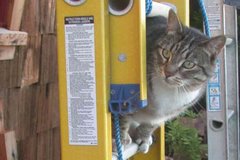The official CASEIS Cruise Blog is located here: http://www.ipgp.fr/caseis This official blog is written by my shift-mate Lola Johannes.
Today we had our first cruise meeting. Nathalie Fueillet (the Principal Investigator for this cruise) told us in French what our shifts were and the general plan for the next few days to a week. Frederica translated for me (thanks Fred). This ship runs on two four hour shifts for most scientists (except Hervé, the post doc, who has a 12 hour shift). 12 hour shifts are long, but not as long as a 24 hour shift (which was my shift on my Sumatra cruise in 2007). I told Hervé to look at the positive that 12 i much less than 24... So, I am lucky to have two 4 hour shifts, 4-8 AM and 4-8 PM. I am on the coring team.
The cruise also has a blog and I will post links to their posts as we go along.

We went out for our last night on the town before the cruise. We saw some great karaoke at this place near the marina in Pointe-a-Pitre. This was where all the locals come to to party. I ordered some wine and later some french fries. The waiter (owner) said "french fries" and I said for the dumb American. He laughed and gave me a 'local' style fist bump (I have been watching him do it with his friends). Here is a photo of him wishing us a farewell. The guy to the right of Guillaume St-Onge is the owner. Other cruise participants, including Nathalie Fueillet (turquoise shirt), are in the photo too.
Here is a photo of the ship the night before we head for our first coring site tomorrow. I will post a map tomorrow of where we are going. We will collect a core, conduct some geophysical investigations (shallow and deep seismic, multibeam bathymetry), then collect more cores, rinse and repeat.

















































